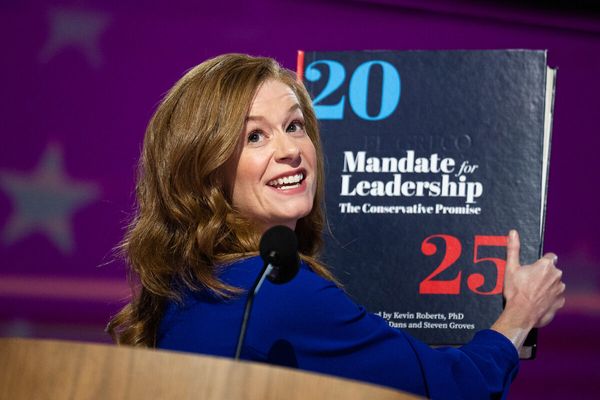
- Red Lobster CEO Damola Adamolekun came from a private equity and finance background, breaking into the restaurant industry through a successful deal he navigated. The former P.F. Chang’s CEO outlined the changes he’s enacting to save the beleaguered seafood chain from bankruptcy and to make it the beloved brand it once was.
Damola Adamolekun reached the pinnacle of restaurant leadership in a somewhat unconditional way. Although the Red Lobster CEO waited tables back in high school, his first big career move was landing an internship with global investment bank Goldman Sachs at age 19.
At the time, Adamolekun was a student athlete at Brown University, where he studied economics and political science. He continued to work as an analyst with Goldman Sachs following graduation for a couple of years, then moved on to become a private equity associate with TPG Capital, where he worked until 2015.
But Adamolekun’s big break came while he was a partner at hedge fund Paulson & Co., which now operates as a family office. In 2019, Paulson purchased Asian-inspired restaurant chain P.F. Chang’s in a $700 million deal. Adamolekun said during a podcast episode of The Breakfast Club that he was the one who pitched the idea to buy P.F. Chang’s to the firm.
“I thought we could do a lot of new things with it. We could add delivery, we could remodel the restaurants. We could make it more interesting,” Adamolekun said. The deal was successful—until the pandemic hit, wiping out restaurant and retail businesses. The P.F. Chang’s CEO even stepped down during COVID, and Adamolekun had to “rescue the situation,” he said.
And with that, Adamolekun stepped in as CEO, officially charting his path to become a revered restaurant executive. The P.F. Chang’s deal “ended up being a really good deal, but not without a lot of blood, sweat, and tears for a few years,” Adamolekun said. He masterminded a plan to remodel the chain’s restaurants and revamp the menu—and is largely using the same playbook as CEO of Red Lobster.
Adamolekun, 36, took over as CEO of Red Lobster in September, as the seafood chain was crawling from the ashes of bankruptcy. He has a three-pillar roadmap for reviving Red Lobster, particularly in the aftermath of its endless-shrimp debacle.
Revamping the menu
One of the biggest mistakes Red Lobster made was its endless-shrimp promotion. Because guests took advantage of the bonkers deal by consuming pound after pound of shrimp, the seafood chain ended up losing millions of dollars.
So, needless to say, Adamolekun is steering clear of any future bottomless-shrimp promotions in the future. Instead, he’s focused on revamping the seafood chain’s menu.
“There's a lot of chain restaurants, [but] there's only one that serves lobster and crab the way we do,” Adamolekun told The Breakfast Club. The seafood chain is leaning into that differentiator, and one new crab dish has become Adamolekun’s favorite.
Remodeling restaurants and shaking up ambiance
Adamolekun’s master plan for reinvigorating Red Lobster includes remodeling the chain’s 545 restaurants. But remodeling at that scale takes time—and money.
For now, Adamolekun has implemented small changes, like changing up the music diners listen to while at the restaurant.
“We fix the things we can fix quickly,” he said during the podcast. “The music is better.”
The restaurant chain has also printed market prices for lobsters on table liners, and will continue to implement “small things you can do now.”
“But comprehensively there needs to be a remodel…and that's something that we'll do in the future, I think,” Adamolekun said.
Higher service standards
Another cost-effective way the restaurant chain is making incremental improvements is through service and hospitality changes. Service workers are expected to greet guests more quickly and be more attentive.
And Red Lobster has already seen tangible improvements from service changes. The restaurant chain tracks a sentiment score, which is a net positive versus negative sentiment, Adamolekun explained, or what people are saying is good versus bad at Red Lobster. The sentiment score was only 30 when he first took over, but last month it had doubled to 60, Adamolekun said during the podcast.
“When you go to Red Lobster next, you'll see it's going to feel different,” Adamolekun told The Breakfast Club.







